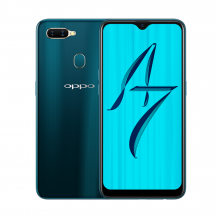
This section describes the class-of-device (CoD) registry subkeys and entries that apply to the Bluetooth driver stack.
You can download the drivers for all devices operating on Windows 10 right from DriverPack Solution’s catalog. The difference of Windows 10 from its predecessor is that it has an option to create multiple desktops, and it also has Cortana voice assistant. Driver for devices on Windows 10. Restart your PC. Windows will attempt to reinstall the driver. If you can't see the desktop and instead see a blue, black, or blank screen, see Troubleshoot blue screen errors or Troubleshoot black or blank screen errors. Check for Windows updates.  Acer (Notebooks, Tablets, Desktops) Any Windows 10 drivers by Acer, for your Acer computer, are.
Acer (Notebooks, Tablets, Desktops) Any Windows 10 drivers by Acer, for your Acer computer, are.
'COD Major' and 'COD Type' Values
EQ6R-Pro ASCOM driver not recognized - posted in Mounts: I picked up a new EQ6R in the hope that it would run w/o hassle. I cant get ASCOM to recognize the hand control. When connected w/ a USB 2b in the HC and 2a to the laptop, neither ASCOM or the SkyWatcher firmware updater will connect to the computer. However, in the device manager, it shows the connection is at the COM3 port. Connect your Android device to your computer's USB port. Right-click on Computer from your desktop or Windows Explorer, and select Manage. Select Devices in the left pane. Locate and expand Other device in the right pane. Right-click the device name (such as Nexus S) and select Update Driver Software. This will launch the Hardware Update Wizard.
Original equipment manufacturer (OEMs) can use the COD Major and COD Type values to indicate the Class of Device for a Bluetooth-enabled Windows device. After the Bluetooth class installer sets the Class of Device based on these registry values, a remote device can determine whether it is connecting to a portable computer, a desktop computer, a phone, and so on.
The registry path to the COD Major and COD Type values is:
HKEY_LOCAL_MACHINESYSTEMCurrentControlSetServicesBTHPORTParameters
Note that setting these values changes the Bluetooth Class of Device for the system, regardless of which Bluetooth radio may be attached. You can set the COD Major and COD Type to DWORD values as defined for the Class of Device field values in the Bluetooth SIG Assigned Numbers.
The Bluetooth profile driver, BthPort.sys, reads the COD Major and COD Type values to determine how it should respond to a device inquiry. These values affect only the COD_MAJOR_XXX and COD_XXX_MINOR_XXX bits of the Class of Device. The COD_SERVICE_XXX bits are not affected by this registry entry.
If the COD Major and COD Type values are not set or are set to invalid values, the Bluetooth class installer will set these values to COD_MAJOR_COMPUTER and COD_COMPUTER_MINOR_DESKTOP, respectively.
Scanning Parameterization Settings
Profile drivers can specify scanning parameters settings for their device(s) in their profile driver's INF file to tailor to the specific needs of a given device scenario.
You can override the default system scanning parameters by providing one or more of the following scanning parameters listed below into the AddReg directive. More information on how to use this directive can be found in INF AddReg Directive.
| Value Name | Type | Min Value | Max Value |
|---|---|---|---|
| HighDutyCycleScanWindow | DWORD 0x10001 | 0x0004 | 0x4000. Shall be equal or smaller than the HighDutyCycleScanInterval parameter |
| HighDutyCycleScanInterval | DWORD 0x10001 | 0x0004 | 0x4000 |
| LowDutyCycleScanWindow | DWORD 0x10001 | 0x0004 | 0x4000. Shall be smaller than the LowDutyCycleScanInterval parameter |
| LowDutyCycleScanInterval | DWORD 0x10001 | 0x0004 | 0x4000 |
| LinkSupervisionTimeout | DWORD 0x10001 | 0x000A | 0x0C80 |
| ConnectionLatency | DWORD 0x10001 | 0x0000 | 0x01F4 |
| ConnectionIntervalMin | DWORD 0x10001 | 0x0006 | 0x0C80. Shall be smaller or equal to ConnectionIntervalMax |
| ConnectionIntervalMax | DWORD 0x10001 | 0x0006 | 0x0C80 |
Note
Changes to scanning parameters make a global impact on the performance of the Bluetooth stack. Making changes to scanning parameters programmatically is not permitted. Using Low Duty Cycle scanning parameters that are too aggressive can not only have a negative impact to the available bandwidth for other Bluetooth Low Energy connections, but also for Bluetooth BR/EDR connections. Giesecke devrient currency technology gmbh.
Virtual COM Port Drivers for Ross-Tech USB Interfaces
Older Ross-Tech RS-232 Serial interfaces can be set to power up as 'dumb K-Line pass through' interfaces. This allowed those old Serial interfaces to be compatible with a wide variety of third-party applications which expect a 'K-line pass-through' serial interface. However, our USB interfaces present additional challenges. Early in their development, we found a number of technical advantages to using a 'direct' USB driver which bypasses the Windows Serial drivers entirely. Hence the USB drivers that ship with VCDS do not emulate a serial COM port and cannot be used with applications that expect to communicate via a serial port.
NOTE: The following applies to our legacy USB interfaces (HEX-USB, KII-USB and HEX-USB+CAN). It does NOT apply to our current HEX-V2 or HEX-NET interfaces. These new interfaces do not use a USB UART chip and cannot be be used for 'dumb K-line pass-through'!
In order to facilitate the use of third-party applications which expect to communicate with a serial interface, drivers that emulate a COM port are available. However, anyone thinking about using them needs to be aware of the following points:

We do not offer installation support for these drivers. They should be used only by someone who is competent/comfortable installing (and possible uninstalling) USB drivers on his PC.
We cannot offer any support for third-party software, nor any guarantee that it will work correctly with these drivers. Of course, the same would apply with a serial interface as well.
That said, here some installation notes:
Dso Port Devices Drivers
These drivers are compatible with Windows 2000 and newer. They should work with W2K, XP-32, XP-64, Vista-32 and Vista-64. We do not have any VCP drivers for Windows 98!
Unzip the contents of the download into a new folder.
With an interface plugged in, find it in Device Manager, right-click it, and select Update Driver.
Depending on what drivers your system already has installed, you may have to 'force' these by telling the wizard not to search, but to let you specify what driver to install, then doing the Have Disk and Browse thing.
There's also the possibility that the Virtual COM Port won't install automatically. We've found no real pattern why it does on some systems and not on others. If it does not, find the interface in Device > Manager. The name should show '.. with VCP'. Open the properties sheet, click the Advanced tab, and make sure Load VCP is checked. Once checked, disconnect and re-connect the interface.
Once the USB Serial Port is installed, you may need to change the COM Port Number (depending on how high a number the applications supports). Device Manager, Properties sheet for the USB Serial Port, Port Settings tab, Advanced button. The COM Port Number may change if you plug the interface into a different USB port, so I'd recommend always using the same USB port.
VCDS should continue to work fine with these drivers installed. Leave VCDS set to USB, not a Virtual COM Port!
Assuming you've read and understand all of the above, you can download the 'Virtual COM Port' drivers here:
Dso Port Devices Driver Device
Home
Products
VCDS
Product Information
Interfaces
TWIN-USBKII-USB HEX-USB+CAN
Virtual COM Port Drivers

